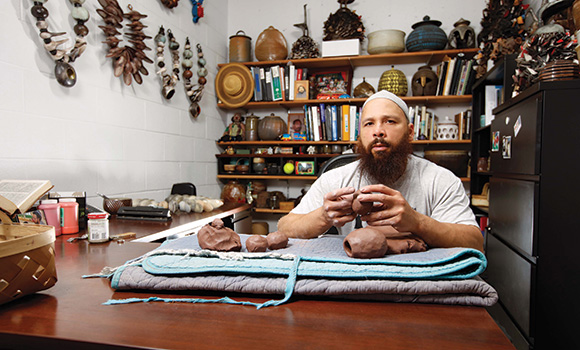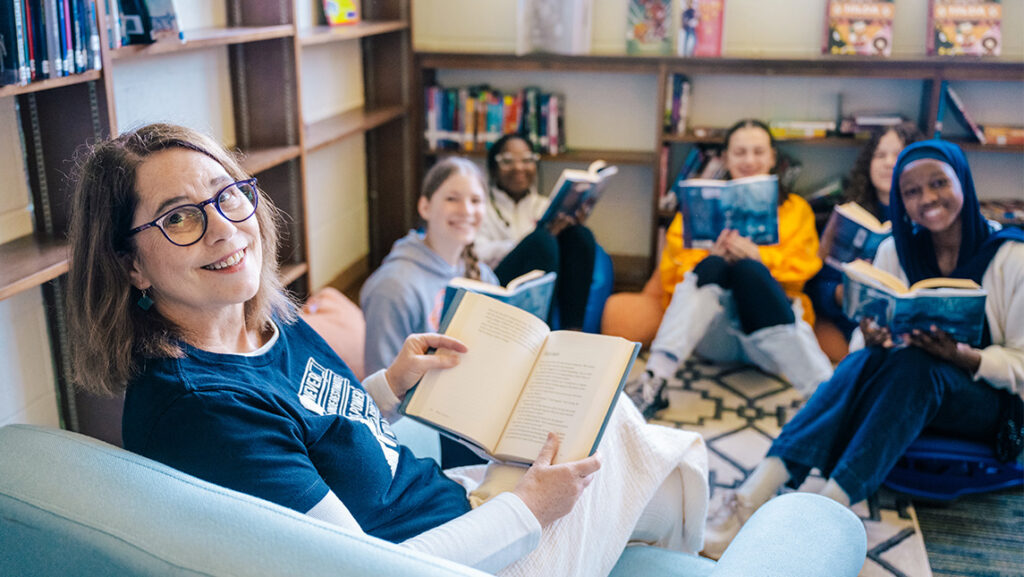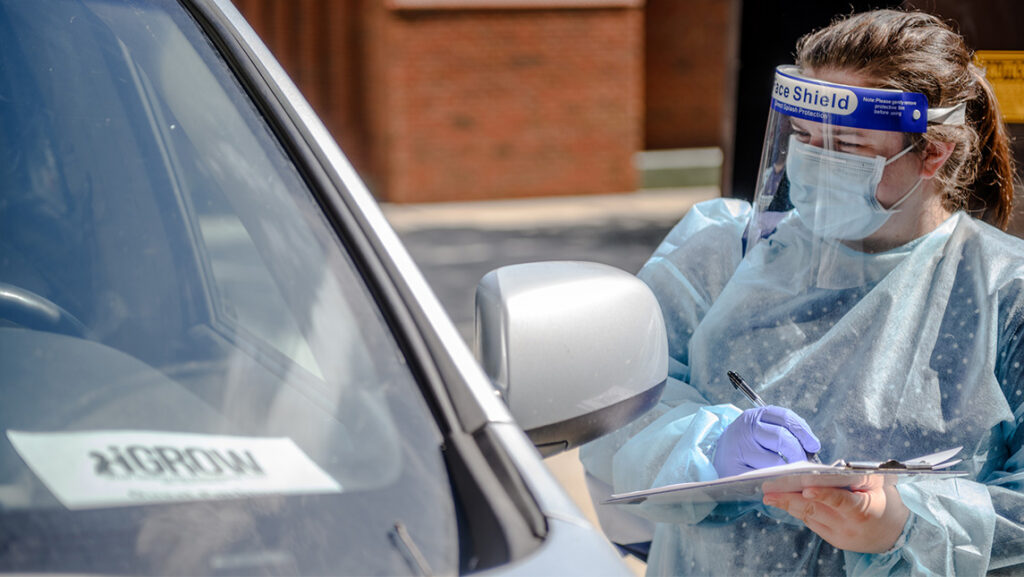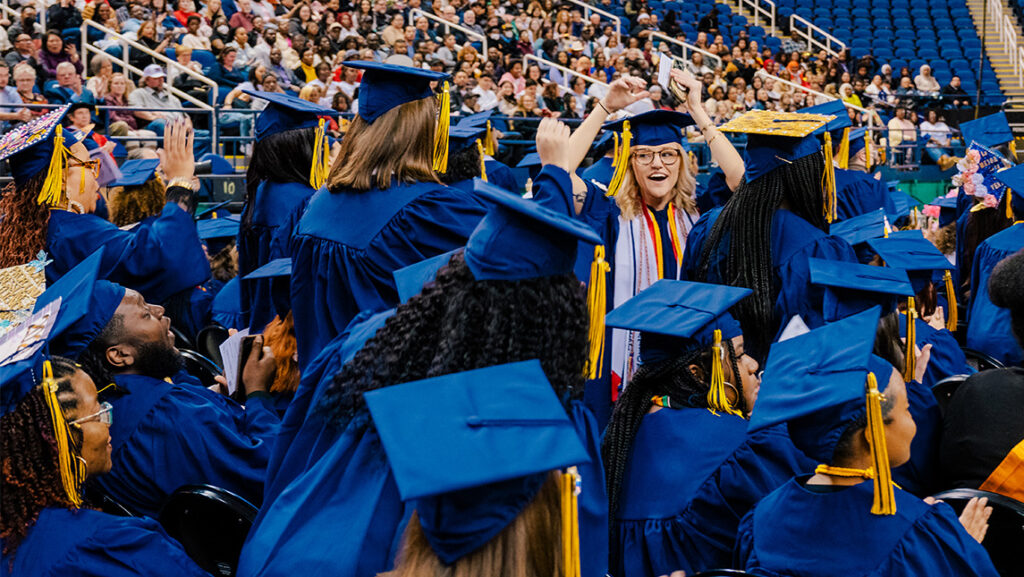“All of it.” That was the curator’s answer when Sharif Bey MFA ’00 asked which of his works the Renwick Gallery of the Smithsonian American Art Museum wanted to show.
The UNC Greensboro alumnus is one of four emerging artists chosen to be featured in the Renwick’s “Disrupting Craft: Renwick Invitational 2018” exhibition, on display through May 5, 2019, at the Washington, DC, gallery.
“I didn’t know these people knew who I was, much less advocating for my work,” said Bey, a dual associate professor in art education and teaching and leadership at Syracuse University. “I make a living as a college professor; I had given up on visions of grandeur.”
The artists were chosen based on a shared dedication to social justice and interrogating cultural identities and established historical narratives through their handmade works, according to the Renwick Gallery.
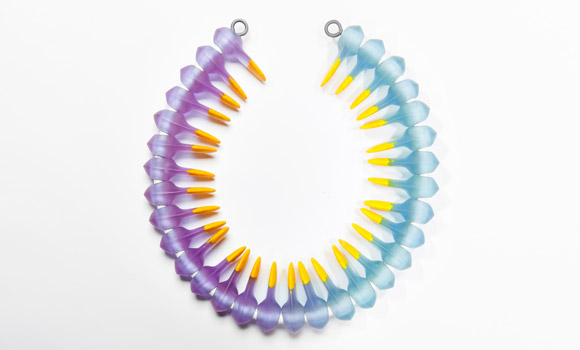
Each artists’ work challenges the conventional definitions of craft to disrupt the status quo and promote collective engagement. The judges’ panel noticed Sharif embraced this theme with his philosophy of teaching while working – his students are a part of the process.
There are 25 pieces in Bey’s portion of the exhibition, including one he made as a graduate student in studio art at UNCG.
“Assimilation? Destruction?” is a site-specific installation he created for the Weatherspoon Art Museum courtyard. It is now owned by the Juliet Art Museum in West Virginia.
Bey chose UNCG’s master of fine arts in studio art program as an undergraduate back in the late 90s based on its tradition of makers and reputation of the foundry – at the time said to be the largest in the Southeast. He did enjoy foundry work as a student, but Bey said the University provided him with so much more.
“Part of my job as an art educator is to demystify what art is. It’s not magic; it’s discipline and research.”
“As someone now on the other end of the fence, I realize what a great education I had at UNCG. Working with Carl Goldstein and Richard Gantt – my ability to spat names off after almost 20 years is evidence that they made an impression,” Bey said.
UNCG also provided Bey with a way to articulate his position as an artist, pushing him to think about not just what he was doing as a maker, but in reference to how his work interfaced with the larger, global conversations happening around social justice.
“It’s really about asking important questions, investigating those questions, and asking new questions; not just about making pretty things, but engaging the world, people, and yourself,” Bey said. “Doing that in the community of people was even better. We were all coming from different places but asking similar questions.”
Bey’s works from UNCG, and in the years that followed, reflect his journey as an artist. His materials shown in the Renwick exhibition range from conventional wheel-thrown pottery, to glass, to mixed media.
The brilliance of Bey’s artistry and teaching is in how it consumes him, how he allows his art to imitate real life – whether teaching or sculpting at his family’s kitchen table as the spaghetti boils.
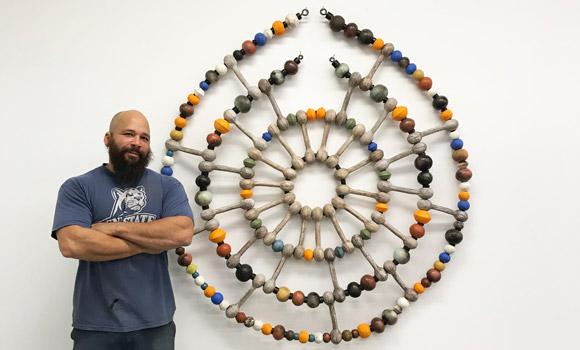
“I exemplify for my students the possibilities of what it means to cultivate that energy in this time,” Bey said. “Part of my job as an art educator is to demystify what art is. It’s not magic; it’s discipline and research.”
And after the Renwick? Bey recently finished a large commission for the U.S. Embassy in Jakarta, Indonesia, and will have his first commercial gallery exhibition this summer.
As his work becomes more appreciated, he said it becomes a different kind of practice. It’s about the right rhythm for the right pace of circumstance – trying to make art while watching your kids, or grading papers.
For now, Bey’s philosophy as a teacher is to continue cultivating the human spirit.
“Our job is to inspire people to sustain curiosity and ask critical questions of the world and self,” Bey said. “We have to be able to renew our own spirits and passions, to instill that in other people. As a teacher, that’s what I teach.”
Story by Elizabeth L. Harrison, University Communications
Images courtesy of the Renwick Gallery of the Smithsonian American Art Museum
